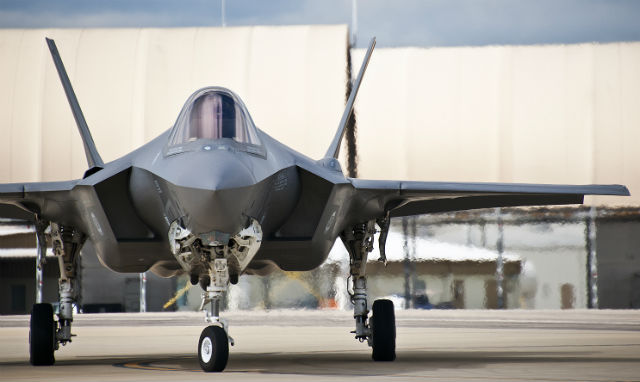The overall cost of the Lockheed Martin F-35 Lightning II programme will come in at about $7.5 billion less than previously expected, according to the 2015 selected acquisition report (SAR).
Released on 18 March, the report indicates that research, development, test and evaluation cost remains unchanged at $54.9 billion, but that procurement costs declined by $7.7 billion, to $331 billion. The F-35 Joint Program Office (JPO) says the reduction was primarily due to decreased labour costs.
While the SAR reports that the operating and support (O&S) costs of the F-35 over its service life remain nearly $1 trillion – the cost assessment programme evaluation that authors the SAR does not adjust O&S figures until a major milestone is reached – the JPO claims its revised cost estimate for this metric showed a $57.8 billion reduction from 2014, bringing the overall figure to $859 billion.
Lockheed's F-35 programme general manager, Lorraine Martin, says the company has reduced O&S costs for the F-35 by $60 billion in the past year alone.
“This is a result of a laser focus by the entire government and contractor team on reducing costs across the board, whether it’s improving quality in manufacturing, increasing supply chain delivery speed, and dramatically reducing concurrency items," Martin says. "We have numerous initiatives in place, including the Blueprint for Affordability, that will drive programme costs even lower, allowing us to provide our warfighters a fifth-generation F-35 jet at a fourth-generation price by the end of the decade.”
Lockheed is aiming for price tag of around $80 million per jet, with a Pratt & Whitney F135 engine, by 2019, when the F-35 will enter full-rate production. Another recent report by the US Department of Defense inspector general (IG) brings into question whether Lockheed's production line will be able to meet a one-jet-per-day peak production rate.
The SAR puts the unit recurring flyaway (URF) cost of an air force F-35A at $108 million in the eighth lot of low-rate initial production (LRIP 8), which was finalised in late 2014 – $4 million less per aircraft than the US government paid in LRIP 7.

US Air Force
"The actual contract negotiated cost of aircraft and engine with fee continues to come down, and remains well below the SAR lot yearly URF estimates," the JPO says.
The IG recently said that the JPO was not ensuring that Lockheed was meeting the 90% reduction in the rate of assembly defects per aircraft "to meet the full-rate production goal of completing one aircraft per day", and was also not tracking its progress using the correct data for LRIP deliveries.
Lockheed was tracking the number of non-conforming material records rather than the number of assembly defects, the IG says. The company showed just a 23% reduction in non-conforming material records, compared to the 60% defect rate reduction that should have occurred in LRIP 5.
Lockheed says the report indicates a 98% drop in findings compared with 2013. It adds that 25% of the resolutions to the new findings have already been validated by the US Defense Contract Management Agency (DCMA), which tracks adherence to government acquisition deals.
DCMA approval is required for every failure resolution before a finding is considered closed. Lockheed says all corrective action plans should be in place by mid-2016.
"Producing quality products is a top priority for the F-35 Lightning II programme. Lockheed Martin, our partners, and our supply base strive every day to deliver the best possible aircraft to our customers. When discoveries occur, we take decisive and thorough action to correct the situation," the company says.
Source: FlightGlobal.com



















